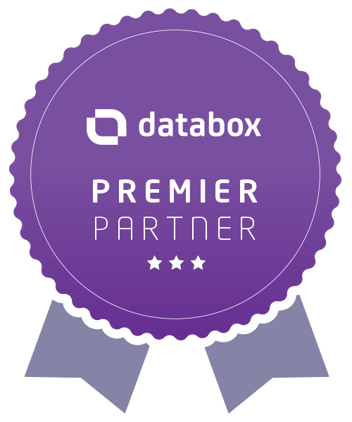
In today’s business climate, it’s common to think that data is a valuable commodity that must be collected and hoarded—the more the better. This is a common misconception. Data overload is a new but growing problem that most organizations don’t realize they have, much less know how to deal with.
While business leaders often believe data equals insight, the two are not directly correlated. Data provides no value when it has no meaning or utility in the context of the organization. Data also has a shelf-life. When an organization holds onto inconsequential and outdated information, it not only wastes resources managing the data, but it can also experience operational errors due to poor information, and organizational leaders may reach incorrect conclusions because they’re basing them on this information. Proper data practices are essential to building long-term, sustained business growth.
The Problem With Too Much Data
The ramifications of hoarding data within your organization are extensive. How many emails get deleted without being fully read due to there being irrelevant information within? How frequently are contact or company records left partially complete because your team members think that not all of the information requested is necessary? (And they’re correct)
Incorrect Conclusions
At the highest level, business leaders need current, concise, and accurate data to make decisions to drive the organization forward. If an organization is drowning in an ocean of data, it’s nearly impossible to tell what information is valuable or meaningful. Assigning meaning to improper data points can have grave consequences for an organization. If a sales leader is looking at a report breaking out sales by geography, he may notice that the team did well in the southeast region last year. That’s great! Let’s throw this year’s marketing budget at the southeast to continue to build on the momentum. What they neglected to realize is that the southeast did so well because there was a certain software that pairs well with their solution. Rather than focusing on geographies where that software is prevalent, this leader has decided to throw their marketing budget in an area with little new opportunity.
Communication Breakdown
At an inter-team level, for an organization to be effective they have to have mastered this skill: communication. Knowing what information needs to be passed to what team at what time is imperative to building efficient and scalable processes. When marketing passes sales a lead whose information is largely irrelevant to the sales cycle and is missing two key data points that sales needs, your sales team begins to lose faith in the marketing team and will not trust the leads being passed. This breakdown in informational communication spans the entirety of your organization and can create an environment of individual, siloed efforts rather than an integrated, team approach.
At the individual level, employees are a business’s most valuable and important asset. For an organization to operate at its highest potential, it's essential to maximize employee performance. Coveo's 2021 Digital Workplace Relevance Report showed that 41% of information companies provide to their employees is irrelevant to them and that employees spend 2.5 hours per day searching for information they need to do their jobs. To connect this to the previous example, if your marketing department is passing leads to your sales team with only 59% of the information they need, your sales team will be wasting valuable time manually scouring for this data.
The Benefits of Good Data
All organizations have goals, which can vary in scope. They may be as siloed as lead routing automation or as complex as a holistic revenue operations overhaul. Regardless of the ideal result, reliable data is a necessary foundation. Without continuity across an organization’s greatest asset—its data, an unconquerable barrier limits its capabilities. A consistent informational structure has several benefits:
Data Cleanliness
“Dirty” data impacts every facet of an organization. Outdated, misaligned, unformatted information inhibits a business from achieving almost any organizational goal.
Segmentation
Segmenting contacts or companies based on certain criteria to personalize outreach requires reliable, consistent data across the organization so all teams are speaking the same language.
Process Continuity
Consistent processes are inextricably tied to consistent data. For example, if your sales team formats information differently than your customer success team, it becomes impossible to foster consistent inter-team communication. The result can be missteps in handoff processes and leadership that are unable to generate high-level reporting with information that encompasses multiple teams.
Automation
Automation requires consistent, repeatable processes that are built upon accurate information. Without reliable enriched data, automated segmentation and lead assignment will be unachievable.
Reporting
Organizations need reporting. Employees need to gauge their personal efforts, and leaders need to evaluate the efficacy of their business decisions. Without consistent information and processes, it’s impossible to create accurate, timely reports to guide future decision-making.
What Data Is Important, Where Can You Find It?
In a modern marketplace, a business’s success is directly tied to its ability to properly analyze and leverage data. Understanding what pieces of information are valuable to your processes benefits every piece of your organization. Determine what information each team needs to successfully complete their work. Decide what questions need to be asked to gather this information, and then gather it at scale.
Once you know what data needs to be gathered, you need to determine where to get it. Which sources you use will depend on your industry and the complexity of information needed, For example, data providers such as ZoomInfo and Seamless are great for general B2B information like a company’s industry and headcount. More niche platforms, like Crunchbase, can provide more specific information like a company’s funding round. Some information, like specific needs or a project timeline, needs to be gathered the old-fashioned way—with a phone call.
Used judiciously, data can provide insights that unlock many doors for your organization. Excessive, irrelevant, or outdated information, however, can undermine your decision-making process. You can make the best use of your company’s data by understanding what information your people need, structuring it effectively, and aligning it with your overarching business objectives.
For more insights on data management, digital marketing, and more, subscribe to the Blue Frog blog!


